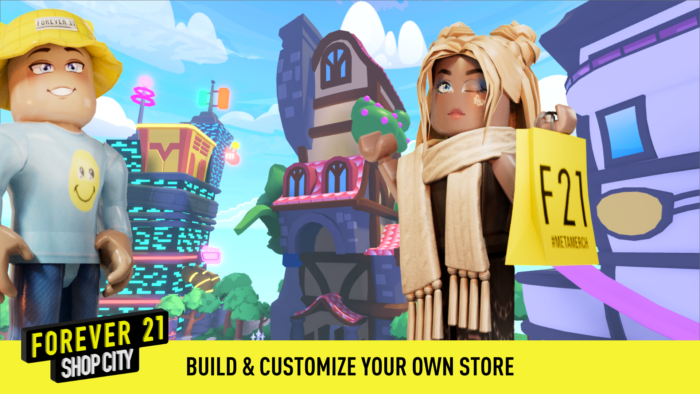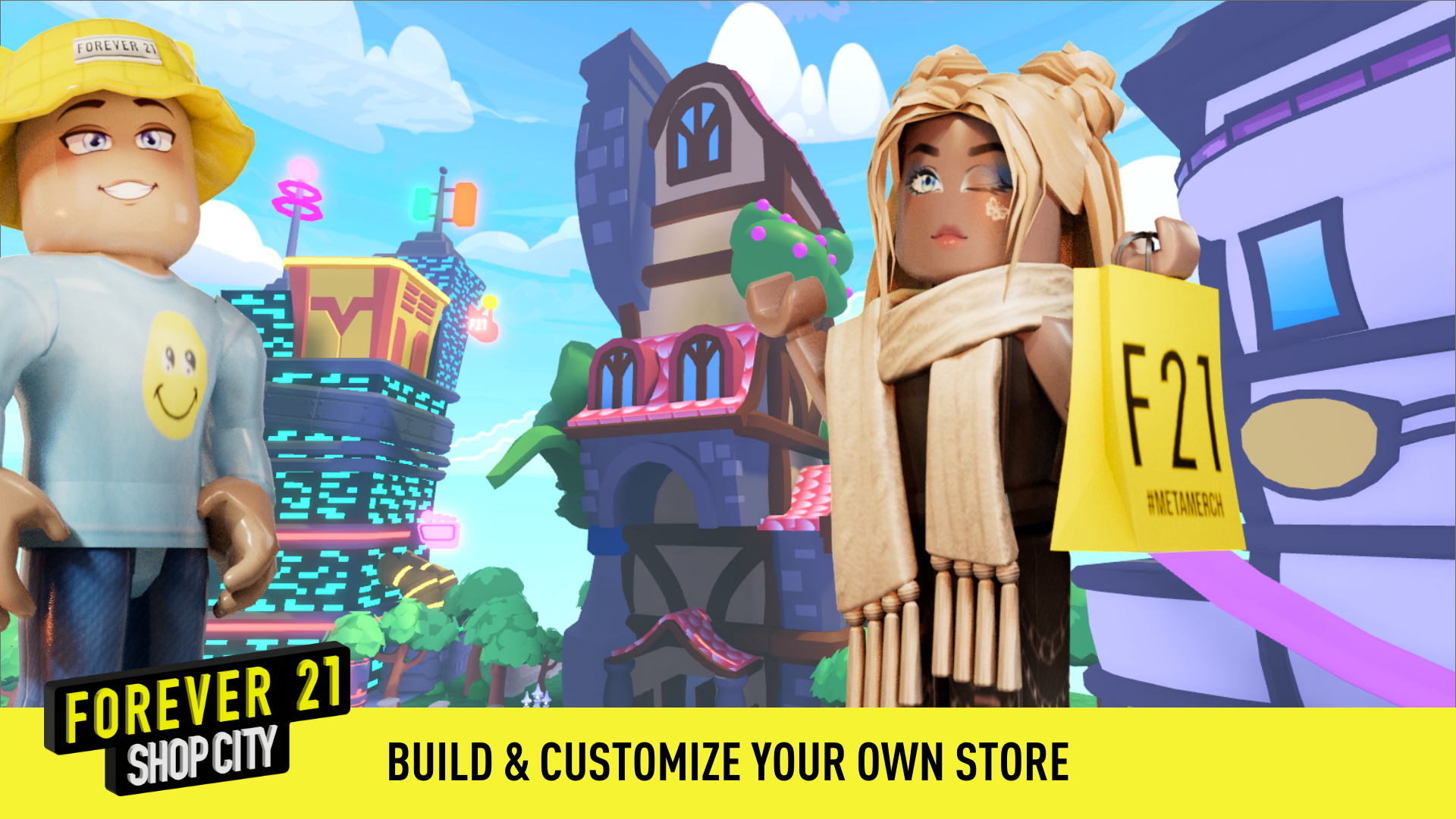 As many companies have realized, the metaverse offers new opportunities for branding and advertising. However, it can be difficult for these companies to know what sort of branding strategies to use. This is where businesses like VBG (Virtual Branding Group) have found success. Through thorough research, VBG has been able to create impactful marketing strategies for businesses looking to take advantage of the metaverse. Their latest work helped bring in around $2.3 million in branding revenue for Forever 21, via a partnership with Roblox.
As many companies have realized, the metaverse offers new opportunities for branding and advertising. However, it can be difficult for these companies to know what sort of branding strategies to use. This is where businesses like VBG (Virtual Branding Group) have found success. Through thorough research, VBG has been able to create impactful marketing strategies for businesses looking to take advantage of the metaverse. Their latest work helped bring in around $2.3 million in branding revenue for Forever 21, via a partnership with Roblox.
 VBG’s CEO, Justin Hochberg, explained a bit about how VBG develops its branding strategies. “We have a set of guidelines that we think helps brands really embrace what the metaverse can be,” he said, “as opposed to thinking about it as just sort of like e-commerce.” It’s this set of guidelines, what he calls “four legs of the stool” help create an important checklist for any company interested in looking into metaverse advertising.
VBG’s CEO, Justin Hochberg, explained a bit about how VBG develops its branding strategies. “We have a set of guidelines that we think helps brands really embrace what the metaverse can be,” he said, “as opposed to thinking about it as just sort of like e-commerce.” It’s this set of guidelines, what he calls “four legs of the stool” help create an important checklist for any company interested in looking into metaverse advertising.
1 and 2: Optimizing the Metaverse Experience

If a company wants to find its successful brand in the metaverse, Hochberg says that it must first develop a brand experience. “It’s supposed to be an experience like in the physical world, like Disney World. It’s immersive, it’s a place you want to hang out,” Hochberg stated. He emphasized that because players were using the metaverse to have fun experiences, brands needed to reflect this process. “The idea here is it’s not a game, it’s not a sales thing. It’s an immersive experience.”
 The second point Hochberg put on the branding checklist was to create a brand experience specific to the metaverse. “Number two is to figure out ways to create the brand DNA in the metaverse, but not replicate the physical world,” he said. He mentioned companies like Samsung creating metaverse stores that looked identical to their real-life counterparts. While this may give some familiarity to the user, Hochberg believes companies should dream bigger. In developing the metaverse Forever 21 brand, VBG made the store as unique as possible. “We allow people to make it look like anything,” Hochberg added. “It can look like cyberpunk, it can look like a Malibu Barbie house, or the Avenger’s headquarters. The idea is to let the consumer create the experience so that they are embracing the brand.” Having an ongoing experience encourages more interactions from the user, boosting the brand image.
The second point Hochberg put on the branding checklist was to create a brand experience specific to the metaverse. “Number two is to figure out ways to create the brand DNA in the metaverse, but not replicate the physical world,” he said. He mentioned companies like Samsung creating metaverse stores that looked identical to their real-life counterparts. While this may give some familiarity to the user, Hochberg believes companies should dream bigger. In developing the metaverse Forever 21 brand, VBG made the store as unique as possible. “We allow people to make it look like anything,” Hochberg added. “It can look like cyberpunk, it can look like a Malibu Barbie house, or the Avenger’s headquarters. The idea is to let the consumer create the experience so that they are embracing the brand.” Having an ongoing experience encourages more interactions from the user, boosting the brand image.
3: A Convenient Way of Commerce
For the third branding checklist point, Hochberg emphasized creating a convenient method for purchasing. He mentioned the one-click checkout from Amazon as an example. “We have been a thought leader in creating different marketing techniques that connect the metaverse merchandise with e-commerce and a physical store, in a triangle.” Called “Infinite Loup Marketing,” VBG’s process drives consumers to real-life stores and back to the metaverse. This creates convenience for the user, as they can shop their favorite brands in virtual reality or in real life.
- Standing Out in the Virtual World
Hochberg’s fourth point moved from focusing on the consumers to looking at the brand’s image. “On Roblox, there are 40 million games and about 50+ million users every day. So, you need to stand out,” he said. Hochberg and the VBG team have created some immersive and creative ways to do this. In their partnership with Forever 21, they created a new metaverse holiday to help market the brand. “We invented Forever 21 day, on the 21st of. Special events happen every month on that day in the metaverse.” This allows players to get excited and creates anticipation about the brand to better engage in the experience.
Bonus 5: Collaboration, Not Colonization
 From their success with Forever 21’s brand, the VBG team has realized that collaboration can continue the brand’s impact. According to Hochberg: “We had the top designers that are on Roblox, work with us to create the collection there. They sell on average 70 million units a year, making millions of dollars on their own.” Hochberg explained that too many brands want to colonize space in the metaverse, missing out on important collaborations. “One of the things we did in our world is we actually created an entire section of the game experience where we highlight collaborators who design for us. It’s called Collab 21. Each month, we put in new designers and show off the things they design first, so they get exposure. We’re really a bottoms-up community-driven experience.”
From their success with Forever 21’s brand, the VBG team has realized that collaboration can continue the brand’s impact. According to Hochberg: “We had the top designers that are on Roblox, work with us to create the collection there. They sell on average 70 million units a year, making millions of dollars on their own.” Hochberg explained that too many brands want to colonize space in the metaverse, missing out on important collaborations. “One of the things we did in our world is we actually created an entire section of the game experience where we highlight collaborators who design for us. It’s called Collab 21. Each month, we put in new designers and show off the things they design first, so they get exposure. We’re really a bottoms-up community-driven experience.”
For more market insights, check out our latest Digital Twin news here.













